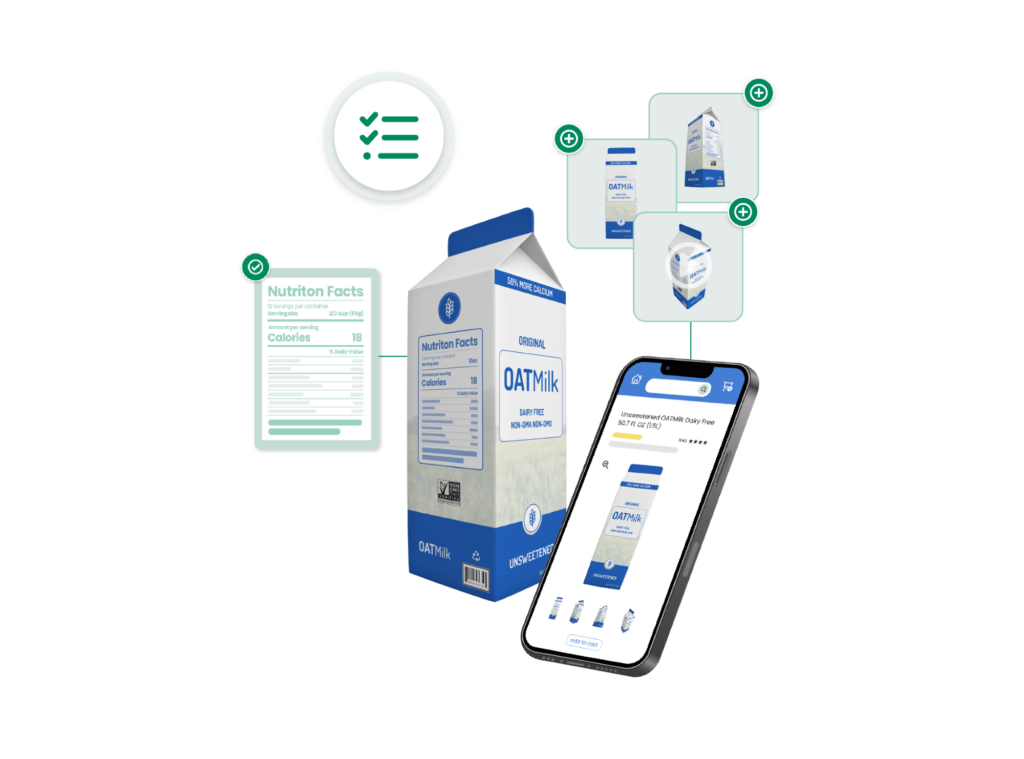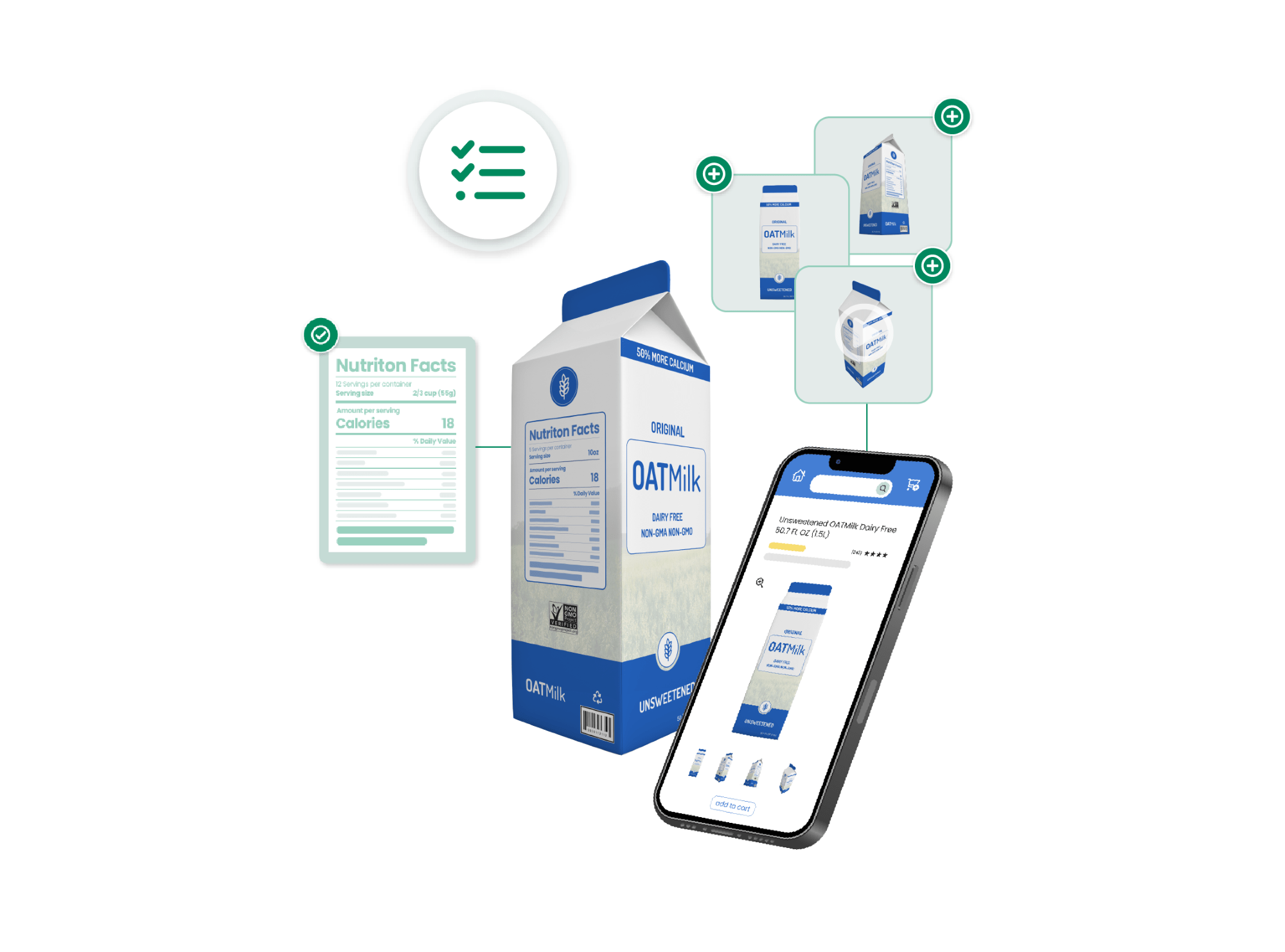Digital product content plays an invaluable role in the online shopping experience. As consumers rely on digital commerce to meet their needs, your product content provides the information they require to make an informed, confident purchase.
Your product content strategy must include effective management and distribution methods. Our supplier checklist provides the guidelines you need for managing and distributing your product content to see your highest conversions to date. Read on to learn more.
The Goal of Product Content Management and Distribution
Your product content is an essential component to the success of your brand and business. Recent 1WorldSync research found that seven out of ten online shoppers will abandon a product purchase if there’s not enough product content or the content is of poor quality.
With consumers spending more time evaluating and interacting with product content, brands must understand how and why to execute content management and distribution.
In the past, brands relied on trading partners to merchandise for them. Now, brands must take an active role in the content experience to ensure consumers have the information they require to move toward a purchase.
The goal of product content management and distribution is to ensure a complete and consistent content experience. Eighty-one percent of consumers expect their interactions with your brand to be consistent, even as they come to your product content through various channels.
With an effective management and distribution strategy, you can provide consistent, accurate content that meets their needs and promotes brand transparency. And that leads to increased trust, conversions, loyalty, and revenue.
The Product Content Management and Distribution Checklist
Your product content drives your business, regardless of your industry. And content management doesn’t end once you’ve clicked “publish.” Content management and distribution is an ongoing process to ensure smooth, accurate, and automatic content delivery to all sales channels and consumer touchpoints.
You invest significant resources into content creation; ensure your content makes the highest impact possible with our content checklist.
1. Data Capture and Validation
Working with various retailers and trading partners allows you to reach diverse audiences, each with unique shopping preferences. A consistent, streamlined content experience relies on effective data capture and validation across channels and trading partners.
Each of your retail partners requires different content and data standards. The right product syndication solution will automatically validate your data, identifying content gaps or errors that might result in rejection from your partners.
Data capture and validation prevent obstacles to publishing content, allowing you to reach consumers –– and sell products –– faster and more effectively.
2. Optimizing and Enriching Product Content
Your product content engages consumers, makes them aware of their needs and pain points, instills trust and confidence, positions your brand as an authority, and is often the factor that compels shoppers to click the buy button. Because content plays so many crucial roles in the buyer’s journey, you want to optimize and enrich your product content.
Rich product content goes above and beyond traditional content to tell the whole story of your brand. It accomplishes information delivery while engaging consumers on an emotional level. Rich content puts high-impact media before your consumers, hitting their pain points and driving them to purchase.
3. Maintaining GDSN Standards
The GDSN (global data synchronization network) is the universal system for product data sharing. Brands hoping to compete in any marketplace must adhere to GDSN standards to ensure product data accessibility. Your content distribution strategy must include implementing a data management program that helps you maintain GDSN standards. It’s the most efficient and effective way to deliver content directly to your shoppers.
4. Syndication Pool Reach
Data pools allow suppliers and trading partners to obtain, maintain, and exchange product data in a standardized format, enabling real-time content and data sharing. Because you input data directly into your data pool, all information is the same, reducing the likelihood of entry and edit errors.
Syndicating your pool reach through a trusted data pool provider like 1WorldSync ensures your data gets to users –– completely and accurately –– across all channels.
5. Choosing the Appropriate Channels
As you build your content distribution strategy, the channels you choose will significantly impact your success.
Content distribution channels are the channels through which you share and promote your product content. The channels you choose to market through depend on your audience and their shopping and buying behaviors.
Content distribution happens through three primary channels: paid, earned, and owned media.
Paid Content Distribution
PPC (pay-per-click) ads and sponsored content are common paid content distribution channels. Paid content distribution allows brands to target –– or retarget –– consumers with relevant content.
Earned Content Distribution
Third parties are responsible for content sharing in earned content distribution. Social shares and mentions and product reviews are typical earned content channels.
Owned Content Distribution
Owned channels include your site, socials, blogs, email newsletters, PDPs, and other properties where you determine when and how content is published.
Your content distribution channels are just as important as the content itself. Conducting audience research helps you understand which channels and platforms will be the best allocation for your resources. Depending on your audience, you will likely find some channels effective, while others might waste your team’s time and energy.
Understanding your audience is essential to determine which channels will be most effective and lucrative for your content distribution strategy.
6. Utilizing PIM Systems
A Product Information Management (PIM) system allows you to optimize content creation and deliver shopping experiences that compel users to purchase your products. Your PIM system will enable you to collect, manage, enrich, and distribute product content seamlessly and efficiently.
As digital commerce takes center stage in retail, suppliers must maintain product data strategies to keep product data organized and deliver that data to the parties that need it. PIM systems are built with this type of scalable data organization and disbursement in mind.
Your ideal PIM solution empowers you to
- Aggregate product data
- Streamline workflows and improve functionality
- Comply with GS1 standards
- Communicate data to your trading partners
- Prioritize quality product content
And lastly, your PIM system should include adequate customer support so you never miss a sale.
Creating a Seamless Content Experience
You can’t overestimate the importance of your product content and delivering that content to consumers across all channels. Creating a seamless content experience is vital in establishing your brand authority and maintaining positive customer and trading partner relationships.
1WorldSync has the tools to optimize your product content from creation to disbursement. Reach out to learn how our resources provide the solutions you need for effective product content management and distribution.






